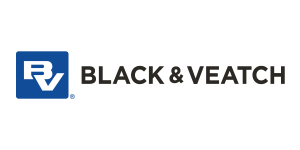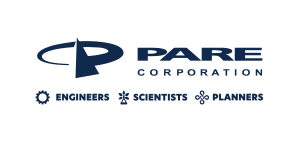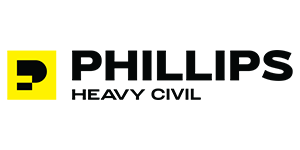Seepage Through Earthen Dams
Contents
- Detection
- Control
- Monitoring
- Dam Owner Academy Series
- Save this page as a printable Dam Owner's Fact Sheet [PDF]
Areas downstream from dams are not usually natural springs, but most likely seepage exiting from the dam’s embankment. Even if natural springs exist, they should be treated with suspicion and carefully observed. Flows from ground-water springs in existence prior to the reservoir would probably increase due to the pressure caused by the pool of water behind the dam.
All dams have some seepage as the impounded water seeks paths of least resistance through the dam and its foundation. Seepage must, however, be controlled to prevent erosion of the embankment or foundation materials or damage to concrete structures.
Detection
Seepage can emerge anywhere on the downstream face, beyond the toe, or on the downstream abutments at elevations below normal pool. Seepage may vary in appearance from a "soft," wet area to a flowing "spring." It may show up first as an area where the vegetation is lush and darker green. Cattails, reeds, mosses, and other marsh vegetation often become established in a seepage area. Another indication of seepage is the presence of rust-colored iron bacteria. Due to their nature, the bacteria are found more often where water is discharging from the ground than in surface water. Seepage can make inspection and maintenance difficult. It can also saturate and weaken portions of the embankment and foundation, making the embankment susceptible to earth slides.
If the seepage forces are large enough, soil will be eroded from the foundation and be deposited in the shape of a cone around the seepage outlet. If these "boils" appear, professional advice should be sought immediately. Seepage flow which is muddy and carrying sediment (soil particles) is evidence of "piping," and could very possibly cause failure of the dam. Piping can occur along a spillway and other conduits through the embankment, and these areas should be closely inspected. Sinkholes may develop on the surface of the embankment as internal erosion takes place. A whirlpool in the lake surface may follow and then likely a rapid and complete failure of the dam. Emergency procedures, including downstream evacuation, should be implemented if this condition is noted.
Seepage can also develop behind or beneath concrete structures such as chute spillways or headwalls. If the concrete structure does not have a means such as weep holes or relief drains to relieve the water pressure, the concrete structure may heave, rotate, or crack. The effects of the freezing and thawing can amplify these problems. It should be noted that the water pressure behind or beneath structures may also be due to infiltration of surface water or spillway discharge.
A continuous or sudden drop in the normal lake level is another indication that seepage is occurring. In this case, one or more locations of flowing water are usually noted downstream from the dam. This condition, in itself, may not be a serious problem, but will require frequent and close monitoring and professional assistance.
Control
The need for seepage control will depend on the quantity, content, and location of the seepage. Reducing the quantity of seepage that occurs after construction is difficult and expensive. It is not usually attempted unless the seepage has lowered the pool level or is endangering the embankment or appurtenant structures. Typical methods used to control the quantity of seepage are grouting or installation of an upstream blanket. Of these methods, grouting is probably the least effective and is most applicable to leakage zones in bedrock, abutments, and foundations. These methods must be designed and constructed under the supervision of a qualified professional engineer experienced with dams. Controlling the volume of the seepage or preventing seepage flow from removing soil particles from the embankment is extremely important. Modern design practice incorporates this control into the embankment through the use of cutoffs, internal filters, and adequate drainage provisions. Control at points of seepage exit can be accomplished after construction by installation of toe drains, relief wells, or inverted filters. Weep holes and relief drains can be installed to relieve water pressure or drain seepage from behind or beneath concrete structures. These systems must be designed to prevent migration of soil particles but still allow the seepage to drain freely. The owner must retain a professional engineer to design toe drains, relief wells, inverted filters, weep holes, or relief holes.
Monitoring
Regular monitoring is essential to detect seepage and prevent a potential dam failure. Knowledge of the dam's history is important to determine whether the seepage condition is in a steady or changing state. It is important to keep written records of points of seepage exit, quantity and content of flow, size of wet area, and type of vegetation for later comparison. Photographs provide invaluable records of seepage.
All records should be kept in the operation, maintenance, and inspection manual for the dam. The inspector should always look for increases in flow and evidence of flow carrying soil particles, which would indicate that a more serious problem is developing. Instrumentation can also be used to monitor seepage. V-notch weirs can be used to measure flow rates, and piezometers may be used to determine the saturation level (phreatic surface) within the embankment.
Regular surveillance and maintenance of internal embankment and foundation drainage outlets is also required. The rate and content of flow from each pipe outlet for toe drains, relief wells, weep holes, and relief drains should be monitored and documented regularly. Normal maintenance consists of removing all obstructions from the pipe to allow for free drainage of water from the pipe. Typical obstructions include debris, gravel, sediment, and rodent nests. Water should not be permitted to submerge the pipe outlets for extended periods of time. This will inhibit inspection and maintenance of the drains and may cause them to clog.
Dam Owner Academy:
The Dam Owner Academy is a series of videos to educate and inform owners on all aspects of operating and maintaining a dam safely. The videos concisely present the critical basics of owner responsibilities and are available as a free resource for owners and those conducting owner outreach programs.
Seepage through earthen dams is discussed in the following videos:
Seepage, Slope Stability & Seismic Issues



































